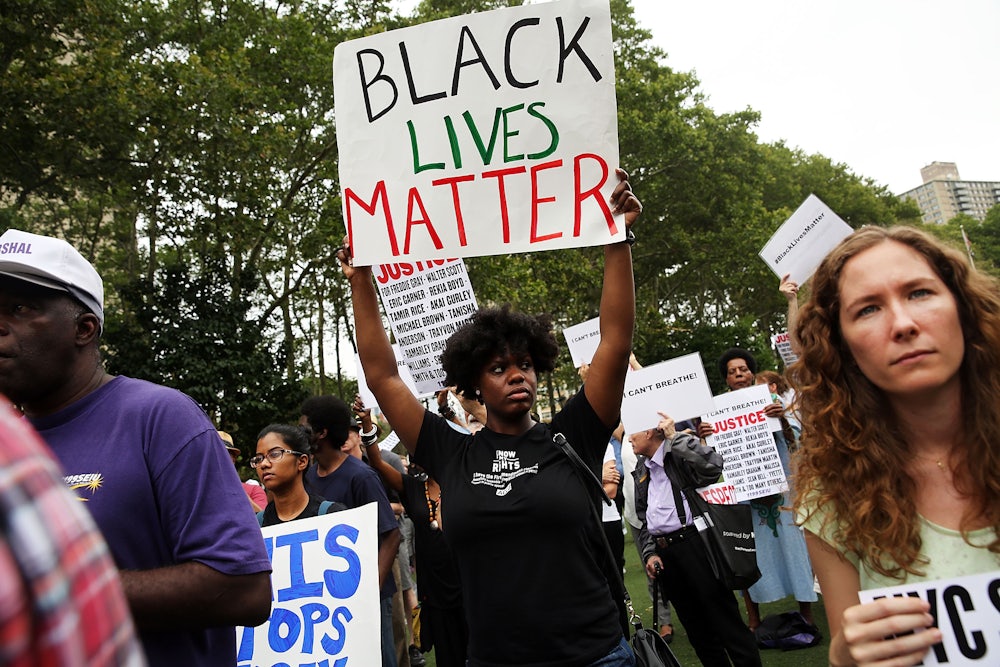What’s in a name? Generally when we name something, we delineate it, conferring the thing characteristics and a definition. But that’s not always true of online movements. Their names have become familiar (#BlackLivesMatter, Bernie Bros, Gamergate, Men’s Rights Activists, etc) though their borders are sometimes less clear. Because the barriers to acting in the name of a group—using a hashtag, writing an article, or reacting to others on social media, for example—are low, coherent definitions of what a movement stands for can get muddied.
Gamergate, for example, began with sexism and has since clearly aligned itself with reactionary politics. Today many members actively ridicule notions of social justice. But when it was founded, to take them at their word, Gamergate’s members were concerned with the ethics of the gaming press and wanted to do something about it. “Doing something about it,” for the gamergaters, often meant doxing and harassing their perceived enemies—mostly female game creators and journalists. The woman at the heart of the initial firestorm has, out of sheer exhaustion, abandoned the harassment charges leveled at her ex-boyfriend, the man who started the hate campaign. Now the movement’s borders are much more porous. Its members are mostly composed of white men against any kind of social progress.
Bernie Bros—some aggressive, mostly male supporters of Bernie Sanders—are similar to gamergaters in their demographic makeup (mostly white males), but are decidedly less toxic. Their crime is mansplaining to women, as opposed to harassing them off the internet. Are Bernie Bros just the latest manifestation of broader online sexism? Or do they reflect misogyny in leftist movements? The difficulty is that the answer is both: Online movements can provide easy opportunity for sexism to manifest, as existing ideological trends can also coalesce around new expressions of ideas. The line is fuzzy.
#BlackLivesMatter, on the other hand, was meant to be less prescriptive in its membership: Anyone who believes in racial justice and tweets under the hashtag can be a member. Despite egregious mischaracterization and criticism by some in the media, that very ease of entry into the movement has helped BLM become a significant force in the current election. Under the radical clarity (and, one would at least hope, the inarguable premise) of the hashtag, a wide umbrella to gather under was formed, for participants and allies alike. Part of the power of the movement is the broad singularity of its purpose.
For all of these movements, it is precisely their openness that’s a gift and a curse: It’s easy to quickly mobilize and scale them, but it’s difficult to determine who’s really a member. How do you define and then rally around something that is constantly morphing?
Movements are hard to sustain. Their typical pattern: A groundswell emerges and coalesces; its influence grows; and then disagreements about ideas or tactics happen, and a split or disintegration follows. It’s was common among leftist movements in the 1960s, feminism between its second and third waves, and even among white supremacists. But when protest movements started to begin online, the nature of activist groupings changed, even if their trajectories did not. The main question, though, is the same across all movements: How do you keep them together?
One answer is to abandon coherence entirely, which is what is both promising and terrifying about Anonymous, the scattered group born on 4chan that went on to commit acts of “cyber-justice” and harassment. But given the social importance of phenomena like #BlackLivesMatter and feminism, such fuzzy definitions aren’t always helpful; clarity of purpose is what allows momentum to build around ideas and the needs of a movement’s members.
The momentum is sometimes hard to maintain. Occupy Wall Street, for example, used social media to gather steam; over the last five years, it has splintered into many on- and offline subgroups. As scholar Judith Butler argued, articulating demands and then occupying space until those demands were satisfied is absolutely vital for successful activism. Which is why Occupy’s legacy is ambivalent: The financial industry is still ascendant, but there have been, for example, campaigns for an increased minimum wage.
Perhaps the porousness and malleability of online activist groups thus needs an ongoing counterbalance—a kind of vigilance that might more aggressively police what is and is not part of a movement. It is not that online activism is unique in its need for an animating spirit or a sense of collectivism; rather, its uniqueness is found in the necessity of constantly defining itself against its own dissolution, etching out in pen the borders of a movement.
In the end, though, ambivalence is the fate of nearly every movement. Going online has only ratcheted up the pace at which it occurs: movements go from grassroots groundswell to splintering off into various groups, often in a matter of months. And the risk is always found in the nature of the mass group—that sometimes it is a collective that can affect real political change; but all too often, it is also a reactionary swarm-like mob, threatening to subsume change for, instead, the inertia of the status quo.
